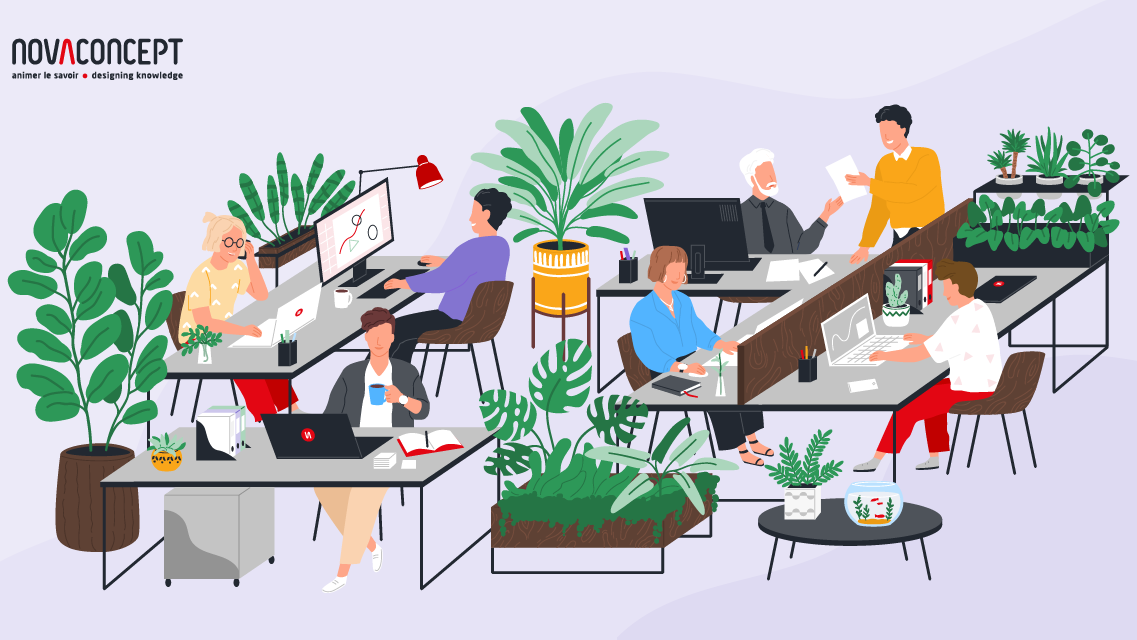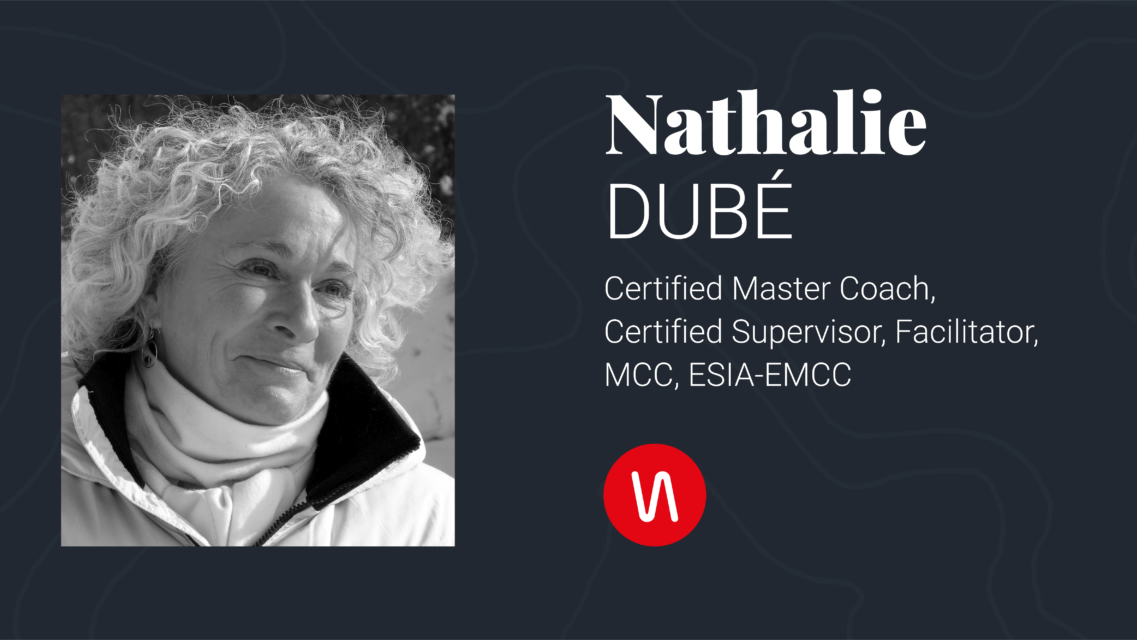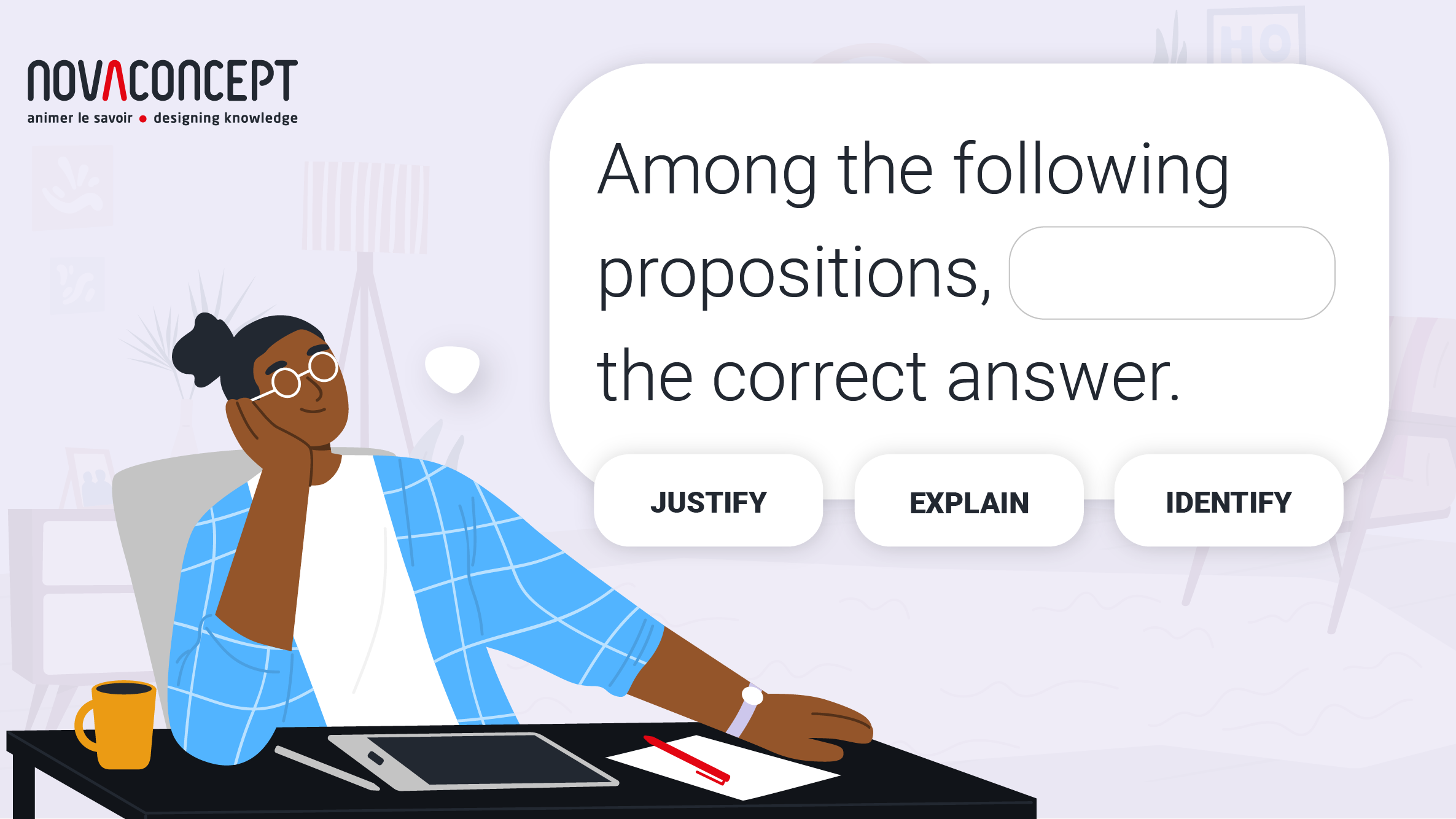More than two years into the pandemic, the business world is still searching for solutions to adapt to the new reality of remote and hybrid work. This unique context is transforming managers’ roles, who are developing new skills to better work with their teams. To ensure cohesion within a team, keep employees satisfied at work and maintain corporate culture, an increasing number of managers are embracing e-leadership. This new concept is all about practising leadership in a virtual context, using information and communications technologies (ICT) to foster engagement, accountability, collaboration, influence, inclusion and much more.
Here are four best practices to ensure cohesion and satisfaction when your teams are working from home.
According to Marie-France Émond, CHRP and Vice-President of Operations and HR at Indigo Consulting, “It’s essential to plan at least one meeting per week to touch base with employees and get status updates on their projects.” (2) With this in mind, a best practice to implement is to plan one or several weekly meetings by videoconference or in hybrid mode. These fixed meetings help keep the lines of communications open, giving team members an opportunity to share ideas and report the progress made in their work. This makes it possible to follow up on various projects, keep the team connected and make sure everyone is happy at work.
Managers can also organize quarterly one-on-one meetings, especially for new hires who require a more personalized follow-up. Strong points and areas for improvement should be discussed in a very spontaneous atmosphere. Personalized e-coaching leverages technology to offer a highly efficient, motivating, and satisfying coaching experience, both for the employee and their manager.
As employees return to the office for hybrid collaboration, we must stress the importance of having in-person meetings. In fact, the return to hybrid work can leave employers puzzled as they spend more time and effort trying to find a formula that pleases everyone.
Annabelle Cadieux, Vice-President of Organizational Transformation at Novaconcept, explains: “Over two years ago, we had to rethink how we organize our work overnight and bring technology to the forefront of our organizational strategies. Although our teams were dependent on remote methods of interaction for several months, they are now faced with the need to develop new collaboration strategies in hybrid mode. Striking a balance between the satisfaction of employees (who happen to like remote work!) and the power of in-person exchanges will be the next challenge for organizations over the next few months.” According to Ms. Cadieux, the key to implementing an efficient hybrid model is to break the dichotomy between virtual and in-person environments. She recommends replacing the physical space by one focused on experiences, which will help engage employees and redefine collaboration.
Listening to your employees is important but being attuned to them matters even more. In fact, managers are responsible for maintaining online connections between remote workers. To check the pulse of their team, they must first actively listen to each person’s needs. Communication is the watchword here. Working from home limits the opportunities for informal conversation, so managers have more trouble pinpointing their team members’ feelings, intentions, or level of comfort. This is why, in addition to meetings, we strongly recommend conducting periodic anonymous surveys. They help strengthen corporate culture, understand the needs and expectations of employees and measure their levels of engagement and satisfaction. Keeping surveys anonymous ensures maximum participation and freedom of expression. So, when you analyze the results and collect feedback from the group of participants as a whole, you can foster a climate of trust and make employees feel they are being heard. This will definitely contribute to their happiness at work.
According to Ms. Cadieux, “trust remains the basic element to create a safe space where employees feel comfortable to reach out. It is vital to create a healthy environment where each employee is comfortable with sharing their challenges, failures, and accomplishments. Having open conversations with your employees or colleagues and not being afraid to show your vulnerability is fundamental if you want to build a strong team, no matter the working arrangements.”
Here, we are referring to a virtual space designed for social interaction and informal conversation outside of your organization’s mandates. It’s a bit like the proverbial water cooler at the office. This spontaneous conversation space helps reduce psychological distance.
You can create multiple discussion channels based on your employees’ personal interests. For example, if several of them love talking about art exhibits, paintings and movies, why not create a channel called “Art”?
Openness, understanding, and especially empathy are key to employee happiness. These values also play a big role in emotional intelligence. Managers are required to be open, understanding and available at all times. Depending on the situation, they could even take on the role of coach or mentor.
To create an environment where employees can thrive, Marie-Claude Arguin, President of happieRH, recommends “focusing on tasks that increase the sense of well-being, either by generating results or by promoting collaboration.” (3) For example, managers can assign team members to tasks they master quite well, which will increase their self-confidence and satisfaction. Group tasks also reduce feelings of isolation and anxiety.
Conclusion
Achieving and maintaining a new balance is essential to successfully reconcile work and happiness in a remote or hybrid work environment. Managers have a plethora of applications and technological tools at their disposal to communicate, collaborate and better connect with their teams. However, technology is not the be-all and end-all to ensure employee happiness. Implementing a form of e-leadership tailored to the team, which includes emotional intelligence and active listening, is also essential. When you combine technology and soft skills, you have the winning formula for happiness. This combination motivates employees, strengthens cohesion and breaks isolation.
The changes brought on by the remote and hybrid work reality have led many organizations to revisit their approaches to ensure their teams’ efficiency, cohesion and well-being. This is why Novaconcept guides leaders as they implement initiatives and key actions to address these new working methods with agility.
We are there to help you achieve your organizational transformation.
Sources :
1. https://www.frontiersin.org/articles/10.3389/fpsyg.2020.554253/full
2. Le télétravail a ses avantages certains. Qu’en est-il de l’esprit d’équipe et de la culture d’entreprise ? (French only) | Hrjob.ca (latoiledesrecruteurs.ca)
3. Le bonheur est à distance (French only) | L’actualité (lactualite.com)
Has this article piqued your interest? Do you want to discuss solutions tailored to your needs? Get in touch now using the form below!
This site is protected by reCAPTCHA and the Google Privacy Policy and the the Terms of Services apply.








